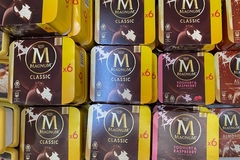
- Industry news
Industry news
- Category news
Category news
- Reports
- Key trends
- Multimedia
- Journal
- Events
- Suppliers
- Home
- Industry news
Industry news
- Category news
Category news
- Reports
- Key trends
- Multimedia
- Events
- Suppliers
From sidestream to mainstream: Taste and better messaging will bring new life to upcycling

23 Feb 2023 --- The potential to transform food that would previously have gone to waste has attracted many players in the food industry to explore upcycling ingredients. However, as the trend expands and matures, companies have to take an extra step to make these products more attractive to consumers, make them taste better while perfecting the sustainability message.
FoodIngredientsFirst speaks with IFF, Kerry, Ingredion and Arla Foods Ingredients representatives on the latest in upcycling ingredients and innovation.
Upcycling has come to the fore in recent years as companies seek to become more sustainable, meet their green targets, while at the same time reduce food waste and tap into potential income sidestreams.

However, according to some industry players, which partook in the Foodvalley webinar “Upcycling to the Consumer,” companies must do more to market the true value of upcycled products.
Rebecca Hesket, program manager of the Ellen MacArthur Foundation – that works toward promoting the idea of a circular economy – says that companies ought to “develop iconic products to showcase the potential of upcycling.”
These iconic products have to be tasteful as well.
“Producers that upcycle miss the part about indulgence. They miss the part of making a tasty product, so consumers don’t get attracted to the foods,” adds David Gebhardt-Mencke, head of innovation and business development at Herbafoods Ingredients.
In the same vein, René Lion, senior consumer scientist at Unilever says: “In the end, people buy a product. They buy it for taste, price and health, and then sustainability, so it’s not going to be the primary driver.”
Nonetheless, according to Innova Market Insights, 50% of consumers say they pay attention to the environmental labels on packaging. Furthermore, products with upcycling claims saw an increase of 62% CAGR between the second half of 2017 and the first half of 2022, according to the market researcher.
By region, the majority of the products launched with an upcycling claim were in North America (60%), followed by Europe (28%) and Asia (2%).
Upcycled ingredients
Brian Nash, VP of corporate sustainability at Ingredion, explains what ingredients the US company is currently upcycling.
“We purchase co-streams from our customers that produce potato chips and French fries, and we upcycle them into functional potato starches that enhance those customers’ products,” he says.
 By region, the majority of the products launched with an upcycling claim were in North America (60%), followed by Europe (28%) and Asia (2%).“An example of this would be creating potato starches that produce a crispier coating for French fries, enabling them to stay fresher during foodservice delivery,” he continues.
By region, the majority of the products launched with an upcycling claim were in North America (60%), followed by Europe (28%) and Asia (2%).“An example of this would be creating potato starches that produce a crispier coating for French fries, enabling them to stay fresher during foodservice delivery,” he continues.
Last year, Ingredion launched its Fibertex line of clean label dietary fibers made from upcycled citrus peels, previously unutilized by-products.
Ingredion also takes “ugly” fruit and vegetables unfit for grocery stores and turns them into value-adding purees and concentrates for various applications.
“We also take the co-streams from our own corn starch manufacturing operations and turn them into animal feed for various applications,” Nash explains.
IFF works to upcycle from the side streams of botanicals for flavors and fragrances, such as cocoa shells from cocoa grown by farmers in Madagascar.
“This waste stream is traditionally not used for food applications, but thanks to the capabilities of LMR Naturals by IFF, we successfully created this creamy cocoa extract that can be used in various chocolate flavors. It also allows us to generate extra income for the farmers in Madagascar,” explainss Eve Martinet Bareau, global innovation program director IFF’s re-imagine clean & waste innovation programs.
The company also upcycles from turmeric root extract that is used in taste and scent applications. Gathering the “spicy, woody and fruity notes of the spice from raw material side products that would normally be discarded,” Martinet explains.
Dairy primacy in the sector
Whey ingredients are considered the ultimate in upcycling, according to Luis Cubel, VP of Commercial at Arla Foods Ingredients.
“It’s amazing to think that it (whey) was once considered waste, given that we’re now able to use whey to create a range of high-value products in areas including sports nutrition, food functionality, early life nutrition and medical nutrition,” Cubel says.
Furthermore, dairy upcycled food and nutrition ingredients can be used in animal feed, bio-based products and bioenergy.
“Cheese is wasted throughout the supply chain across the industry,” flags Juan Aguiriano, head of sustainability at Kerry.
“At Kerry’s facility in Glamsbjerg, Denmark – due to our novel sourcing model, scientific skillset and technical capabilities – we are positioned to upcycle this cheese into delicious, high-quality and shelf-stable cheese powders that deliver an authentic cheese taste,” he notes.
By doing this, Aguriano explains that Kerry is maximizing the potential of the food source and the resource it takes to manufacture the cheese in the first place while simultaneously minimizing food waste.
Upcycling innovation
IFF’s program Reimagine Waste aims to reduce food waste by rescuing ingredients.
“We work on a variety of side streams, aimed at extracting or converting them into valuable ingredients for the food industry, leveraging our broad food technology capabilities,” says Martinet.  Aguiriano notes that food waste entails costs in itself, so that has to be considered as well when taking into account the advantages of upcycling.
Aguiriano notes that food waste entails costs in itself, so that has to be considered as well when taking into account the advantages of upcycling.
“Biotechnologies, such as fermentation and enzymatic treatments, are important drivers for such innovation. In addition to that, we offer our capabilities to develop inspiring concepts of upcycled food and beverages, allowing our customers to innovate faster in this new area.”
Arla Foods Ingredients is working on “Origin,” its new milk fractionation technology.
“As well as ensuring gentler processing, it can simplify production, for example, allowing milk to be turned into infant formula in one step. It also allows us to separate off large quantities of casein, opening up new opportunities in sports and medical nutrition, where we’ve been able to offer high-quality, better-tasting products and new organic options,” says Cubel.
Meanwhile, Kerry recently announced its sponsorship of The Kerry Upcycled Food Foundation Fellowship in the US, which works toward advancing the understanding of the market, consumer perception and technical opportunities of upcycled food.
“Our team is currently innovating with multiple upcycled ingredients that are by-products from our own operations, our customers and from members of the Upcycled Food Association,” notes Aguiriano.
Energy and monetary savings
There are a number of value drivers for upcycled ingredients, which can sometimes include financial benefits, according to Nash. However, those can be offset in some cases by increased transportation or processing.
“With consumer preference for sustainable products continuing to rise, and the emergence of upcycled food certifications, upcycled ingredients can still be a win for our customers even where cost or efficiency benefits aren’t as strong,” he highlights.
Moreover, Aguiriano notes that food waste entails costs in itself, so that has to be considered as well when taking into account the advantages of upcycling.
“When food goes to waste, it becomes a source of greenhouse gas emissions in landfill. It is equally a waste of all of the environmental resources, energy, labor, packaging and investment that went into making that food. Upcycling allows those resources to nourish life and unlock value instead of becoming environmental and production costs.”
“There’s the fact that vast amounts of waste and pollution are being avoided and that we’re moving toward a true circular bioeconomy.,” Cubel concludes.
By Marc Cervera










